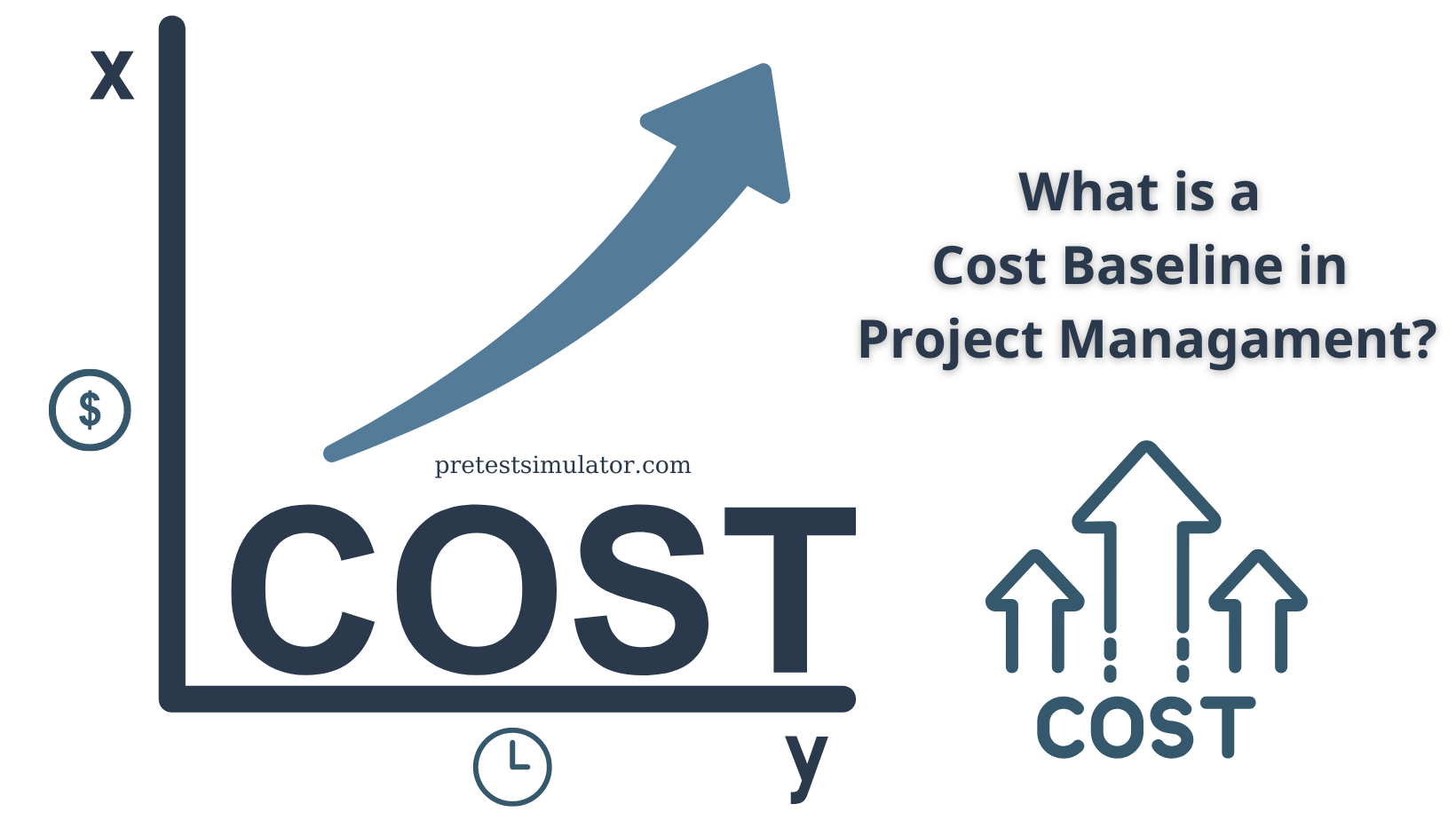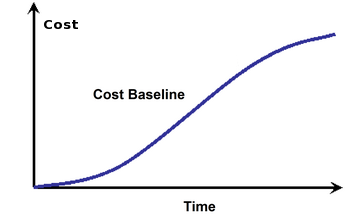What is Cost Baseline

DEFINITION OF COST BASELINE
The cost baseline is a project management term that refers to the approved time-phased project budget used as a benchmark to measure actual project performance. The total budgeted cost for the project, including all planned project expenses throughout the project, is typically depicted in a graph or table format, showing the planned expenditures over time.
The cost baseline is an essential element of the project management plan, and any changes to the cost baseline must be approved through the project change control process. It is used to monitor project performance, identify variances between actual and planned costs, and take corrective action to keep the project on track and within budget.

WHAT DOES COST BASELINE INCLUDE?
The cost baseline includes the following components:
- Work breakdown structure (WBS): The WBS is a hierarchical decomposition of the project scope into smaller, more manageable work packages. It forms the foundation for estimating costs and developing the cost baseline.
- Cost estimate: Cost estimates are developed for each work package using historical data, expert judgment, or other estimation techniques. The estimates include direct and indirect costs, contingency reserves, and management reserves.
- Time-phased budget: The time-phased budget breaks down the cost estimates into periods (e.g., months or quarters) to provide a planned expenditure profile for the project. It helps project managers to track actual costs against planned costs over time.
- Cost control account (CCA): The CCA is a management control point used to measure and monitor cost performance against the cost baseline. It represents a specific part of the project assigned to a responsible individual or team for cost control.
- Change control procedures: Change control procedures are used to manage changes to the project scope, schedule, and budget. They ensure that any changes are properly documented, evaluated, and approved before implementation.
- Performance measurement baseline (PMB): The PMB is a time-phased plan against which project performance is measured. It includes the cost baseline and the schedule baseline and is used to track and report progress against the project plan.
WHY DO WE HAVE TO USE COST BASELINE?
The cost baseline is an essential component of project management, and it serves several purposes crucial for successful project execution.
Here are some reasons why we need to use a cost baseline:
- It provides a reference point: Cost baseline provides a reference point for measuring the actual costs incurred during the project against the planned budget. It helps project managers to monitor the project's financial performance and take necessary actions if there are any deviations from the plan.
- Enables effective cost management: Cost baseline helps project managers to manage project costs effectively by providing a clear picture of the project's financial health. It allows them to monitor and control costs and adjust the budget when necessary.
- Helps to identify risks: Cost baseline helps project managers to identify potential risks that could impact the project's budget. By monitoring cost performance against the baseline, project managers can identify areas where cost overruns may occur and take steps to mitigate these risks.
- Facilitates decision-making: Cost baseline provides project managers with accurate data to make informed decisions regarding project changes, resource allocation, and budget adjustments. It enables them to evaluate the impact of proposed changes on the project's budget and take corrective actions accordingly.
- Ensures project success: Cost baseline plays a critical role in ensuring project success. It helps project managers to stay within budget and avoid cost overruns, which can derail the project. Using a cost baseline, project managers can ensure that the project is completed on time, within budget, and to the desired quality.
HOW TO USE THE COST BASELINE?
To use the cost baseline, you need to compare the actual costs incurred during the project execution to the budgeted costs in the cost baseline. It helps to monitor project performance and determine if the project is on track, over budget, or under budget.
Here are the steps to use the cost baseline effectively:
- Collect Actual Cost Data: You need to collect actual cost data during the project execution. It includes the actual labor, materials, and equipment costs as well as indirect costs, contingency reserves, and management reserves.
- Compare Actual Costs to Cost Baseline: Once you have the actual cost data, you need to compare it to the cost baseline to determine if the project is on track, over budget, or under budget.
- Analyze Variances: If there are differences between the actual costs and the cost baseline, you need to analyze the variances to determine the causes of the differences.
- Take Corrective Action: Based on the analysis of the variances, you need to take corrective action to keep the project on track. It may involve adjusting the project scope, schedule, or budget.
- Update the Cost Baseline: If the corrective action requires changes to the cost baseline, you need to update the cost baseline and get it approved through the project change control process.
WHAT BENEFITS AND DRAWBACKS OF USE OF COST BASELINE?
Benefits of Cost Baseline:
- It provides a baseline for measuring project performance: The cost baseline provides a reference point for measuring actual costs incurred during the project against the planned budget. It helps project managers to identify and manage potential cost overruns and to make informed decisions about project changes.
- Facilitates effective cost management: The cost baseline helps project managers to manage project costs effectively by providing a clear picture of the project's financial health. It enables them to monitor and control costs and make adjustments to the budget when necessary. cost
- Helps to identify project risks: The cost baseline can help project managers to identify potential risks that could impact the project's budget. By monitoring cost performance against the baseline, project managers can identify areas where cost overruns may occur and take steps to mitigate these risks.
Drawbacks of Cost Baseline:
- Limited flexibility: Once the cost baseline has been established, it can be difficult to make changes to the budget without going through a formal change management process. This can limit the project team's ability to respond quickly to changes in the project environment.
- Can become outdated: The cost baseline is developed during the planning phase of the project, and it is based on assumptions and estimates that may not reflect the actual costs incurred during the project. As the project progresses, the baseline may become outdated, and adjustments may be needed.
- May lead to a focus on cost control rather than value: Focusing too much on cost control can lead to a neglect of other important project objectives such as quality, schedule, and scope. This can result in a project that meets its budget but fails to deliver the expected value to the organization.